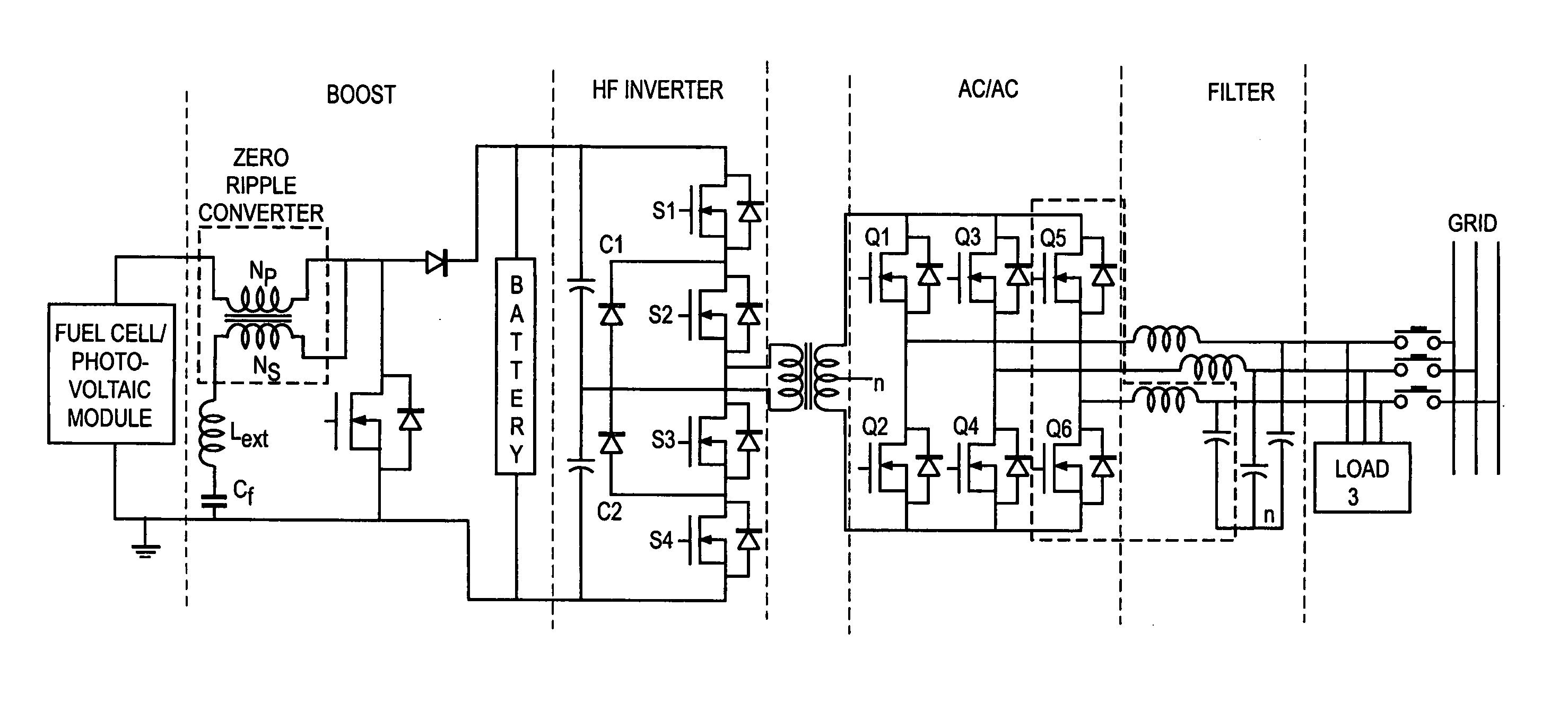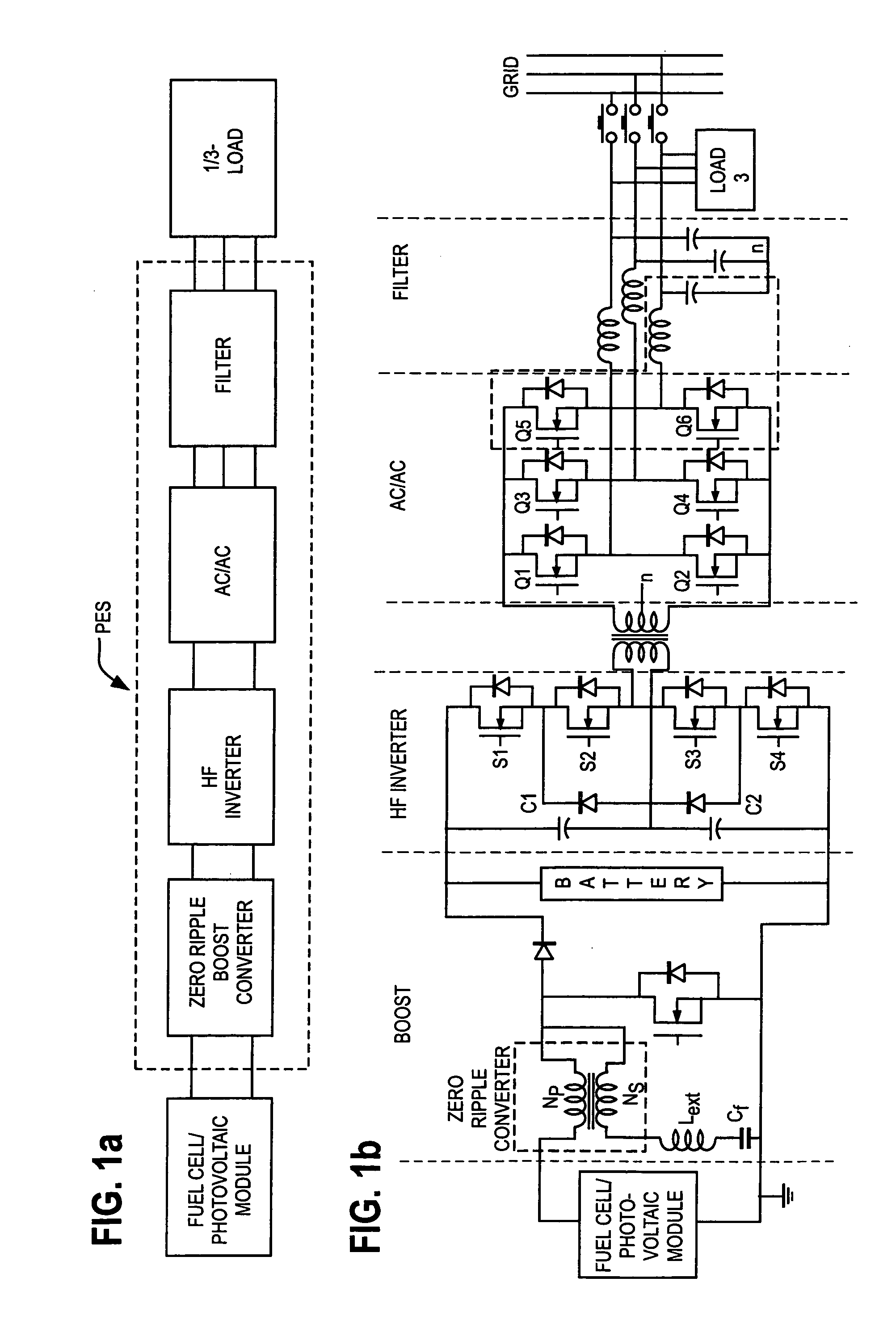Novel efficient and reliable DC/AC converter for fuel cell power conditioning
a fuel cell and converter technology, applied in the direction of dc-ac conversion without reversal, dc-ac circuit to reduce harmonics/ripples, dc-ac network circuit arrangement, etc., can solve the problem that the thermal management of high frequency converters is not reduced, and achieve the effect of reducing thermal management, reducing device voltage stress, and reducing conduction losses
- Summary
- Abstract
- Description
- Claims
- Application Information
AI Technical Summary
Benefits of technology
Problems solved by technology
Method used
Image
Examples
Embodiment Construction
[0030] The proposed PES (FIG. 1) has the following sub systems: (a) boost converter with a zero ripple inductor (b) soft-switched, high frequency (HF) inverter with a multi-level topology, (c) and an ac / ac converter.
[0031] A. Boost Converter
[0032]FIG. 2(a) and FIG. 2(b) show the schematic of the boost converter and implemented control respectively. The main feature of the boost converter is the zero-ripple inductor. The zero-ripple inductor shown in FIG. 2(c) has a primary winding and a secondary winding. Secondary winding comprises N2 turns and has a self-inductance L2 and the primary winding comprises N2 turns and has a self-inductance L2. The windings have a mutual inductance M and a coupling coefficient k given by k=MLSLP(1)
The ripple gain of the inductor is given by VinVo=1-kLPLS(2)
[0033] FIGS. 2(c1-c4) explain the concept of the zero ripple inductor starting with a non-ideal transformer (kc2)). The currents Iin and Iout are AC currents and voltages Vin and Vo are input ...
PUM
 Login to View More
Login to View More Abstract
Description
Claims
Application Information
 Login to View More
Login to View More - R&D
- Intellectual Property
- Life Sciences
- Materials
- Tech Scout
- Unparalleled Data Quality
- Higher Quality Content
- 60% Fewer Hallucinations
Browse by: Latest US Patents, China's latest patents, Technical Efficacy Thesaurus, Application Domain, Technology Topic, Popular Technical Reports.
© 2025 PatSnap. All rights reserved.Legal|Privacy policy|Modern Slavery Act Transparency Statement|Sitemap|About US| Contact US: help@patsnap.com



